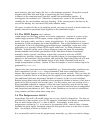from a linear to a logarithmic scale, change a colour palette, or something like that;
simple changes like that are easily made directly to the generated file. EMPOST’s calling
syntax is
empost orders_file results_file
The second argument is the name of a file that EMPOST produces, containing numerical
results of the named orders, e.g. integrals, fluxes, mode matching coefficients, and so on.
These are in the form of assignment statements, and are parsed by POEMS when
postprocessing is completed. POEMS then uses these to compute the value of the penalty
function for the current iteration.
2.5. The Visualization System: VIS5D
VIS5D is an advanced visualization program originally written for meteorological data. It
runs under the X Window System, which is native to Linux and other Unix derivatives,
but which has to be added to Windows and OS/2. Windows users can install
Hummingbird Exceed, which works well with VIS5D once all the arcane X parameters are
set up. See Appendix B for a working sample X configuration.
The Vis5D conversion code in empost is based on a stand-alone program by Theodore G.
van Kessel. In this release, it is fully integrated into EMPOST. Both animated and static
Vis5D files are generated using the MOVIE3D statement.
2.6. Cluster Control
There are lots of ways to structure a cluster, lots of communications styles (such as the
Message Passing Interface (MPI), and lots of cluster management systems such as the Sun
Grid Engine (SGE). POEMS is not tied to any of these, but is easily adapted to them. The
main script runs on a frontend machine. Inter-host communication requires no specific
support other than a high capacity, low latency TCP/IP network. FIDO uses TCP/IP
socket communication between fido subdomains running on different hosts, and local
communication between subdomains running on the same host. To allow the user
control, cluster control is not hardcoded into POEMS, but relies on an external script. The
supplied script is fidossh, which uses a shared file system (e.g. NFS, XFS, or PVFS2) for
communication and ssh for cluster node control, This design is suitable for clusters of up
to perhaps 20 nodes, depending on filesystem performance. The high bandwidth host-to-
host communication is organized in a distributed fashion between cluster hosts, so the
frontend machine does not become a bottleneck in small and medium sized clusters. For
larger clusters, FIDO can use a hierarchical supervision scheme, where a single frontend
node is not forced to supervise hundreds or thousands of hosts, but the cluster script
would have to be tailored for the application.
The downside of this flexibility is that the user has to apportion the work manually.
Future versions of POEMS will help automate this, based on the CPU speed, number of
cores, and amount of memory possessed by each host. Probably it will remain
semiautomatic unless the subdomains can be made very small.
8


















